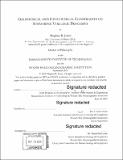| dc.contributor.advisor | S. Adam Soule. | en_US |
| dc.contributor.author | Jones, Meghan R. | en_US |
| dc.contributor.other | Joint Program in Oceanography/Applied Ocean Science and Engineering. | en_US |
| dc.contributor.other | Massachusetts Institute of Technology. Department of Earth, Atmospheric, and Planetary Sciences. | en_US |
| dc.contributor.other | Woods Hole Oceanographic Institution. | en_US |
| dc.date.accessioned | 2020-02-10T21:40:01Z | |
| dc.date.available | 2020-02-10T21:40:01Z | |
| dc.date.copyright | 2019 | en_US |
| dc.date.issued | 2019 | en_US |
| dc.identifier.uri | https://hdl.handle.net/1721.1/123738 | |
| dc.description | Thesis: Ph. D., Joint Program in Oceanography/Applied Ocean Science and Engineering (Massachusetts Institute of Technology, Department of Earth, Atmospheric, and Planetary Sciences; and the Woods Hole Oceanographic Institution), 2019 | en_US |
| dc.description | Cataloged from PDF version of thesis. | en_US |
| dc.description | Includes bibliographical references (pages 113-124). | en_US |
| dc.description.abstract | Submarine volcanic systems form new oceanic crust, host unique chemosynthetic ecosystems, concentrate rare metals, and provide a conduit for chemical transfer from the Earth's interior to hydrosphere. Although our understanding of submarine volcanoes has been historically limited due to their relative inaccessibility, recent observations from active systems provide valuable opportunities to address key open questions in submarine volcanology. This thesis provides new insight into submarine volcanic processes using observations and samples from the 2011 Axial Seamount eruption, the 2012 Havre Volcano eruption, and the Mid-Atlantic Ridge near 14°N. In Chapter 2, I develop best practices for quantifying vesicle textures and reconstructing total CO₂ concentrations in mid-ocean ridge basalts (MORB). | en_US |
| dc.description.abstract | Based on synthetic vesicle populations, 2D and 3D measurements, and Raman spectroscopy, I show that traditional methods overestimate MORB CO₂ concentrations by as much as 50%, which has important implications for estimating ridge CO₂ flux. In Chapter 3, I apply methods from Chapter 2, along with a bubble growth model, to samples from the 2011 Axial Seamount eruption in order to evaluate magma ascent and lava flow rates. I show that the variability in ascent rates during the 2011 eruption spans the range previously proposed over the global mid-ocean ridge system. I suggest that the variability in ascent rates relates to lateral dike propagation and evolving reservoir overpressures and that ascent rates influence flow morphology. In Chapter 4, I address the origin of highly vesicular MORB that pop upon recovery from the seafloor. | en_US |
| dc.description.abstract | I show that bubble accumulation produces the high volatile concentrations in these popping rocks and demonstrate that mantle carbon concentrations are lower and less heterogeneous than previously proposed. In Chapter 5, I evaluate models for the submarine dispersal of giant pumice clasts using observations from the 2012 Havre Volcano eruption. I show that the seafloor distribution of giant pumice is controlled by conductive cooling, the advective displacement of steam by water through highly permeable pathways, and clast breakup during transport and deposition. Together, these chapters provide critical constraints on the flux of volatiles at mid-ocean ridges and the processes governing the emplacement of volcanic products on the seafloor. | en_US |
| dc.description.statementofresponsibility | by Meghan R. Jones. | en_US |
| dc.format.extent | 168 pages | en_US |
| dc.language.iso | eng | en_US |
| dc.publisher | Massachusetts Institute of Technology | en_US |
| dc.rights | MIT theses are protected by copyright. They may be viewed, downloaded, or printed from this source but further reproduction or distribution in any format is prohibited without written permission. | en_US |
| dc.rights.uri | http://dspace.mit.edu/handle/1721.1/7582 | en_US |
| dc.subject | Joint Program in Oceanography/Applied Ocean Science and Engineering. | en_US |
| dc.subject | Earth, Atmospheric, and Planetary Sciences. | en_US |
| dc.subject | Woods Hole Oceanographic Institution. | en_US |
| dc.subject.lcsh | Submarine volcanoes. | en_US |
| dc.subject.lcsh | Ocean bottom. | en_US |
| dc.subject.lcsh | Biotic communities. | en_US |
| dc.subject.lcsh | Geochemistry. | en_US |
| dc.subject.lcsh | Volcanology. | en_US |
| dc.subject.lcsh | WaterCarbon dioxide content. | en_US |
| dc.title | Geophysical and geochemical constraints on submarine volcanic processes | en_US |
| dc.type | Thesis | en_US |
| dc.description.degree | Ph. D. | en_US |
| dc.contributor.department | Joint Program in Oceanography/Applied Ocean Science and Engineering | en_US |
| dc.contributor.department | Massachusetts Institute of Technology. Department of Earth, Atmospheric, and Planetary Sciences | en_US |
| dc.contributor.department | Woods Hole Oceanographic Institution | en_US |
| dc.identifier.oclc | 1138887389 | en_US |
| dc.description.collection | Ph.D. Joint Program in Oceanography/Applied Ocean Science and Engineering (Massachusetts Institute of Technology, Department of Earth, Atmospheric, and Planetary Sciences; and the Woods Hole Oceanographic Institution) | en_US |
| dspace.imported | 2020-02-10T21:40:00Z | en_US |
| mit.thesis.degree | Doctoral | en_US |
| mit.thesis.department | EAPS | en_US |
